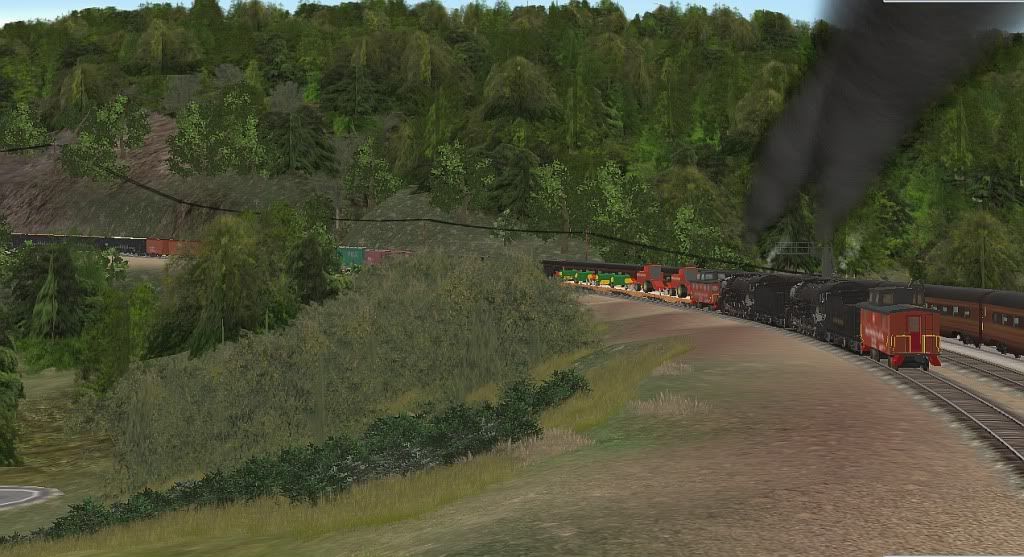After installing track, bridges, roads, and any other spline objects, I create a base ground texture on an area approximately six hundred ft square, tapping one of the bracket keys as I install the texture, to avoid a bitmap pattern. I use 'grass a2' (kuid:-1:1000) as my base texture, setting it to the highest scale.
Using the 'copy and paste' tool, I place the texture side by side to expand it to a larger area, and then start covering the route.
I eventually enlarge this texture base so that I can copy an area 1400 ft wide X 2000 ft in length. This is the largest area that will fit on my screen, and makes the work go fast.
After covering the portion of the route that I'm working on, I lay down a blend of four or five ground textures in a remote area of the route, again, tapping one of the bracket keys as I install the textures, to avoid a bitmap pattern. The area I use for this is also 600' X 600'.
Next I install trees over this area, using six or eight trees in multiples of four, adjusting them to create an even spacing.
This area of ground textures and trees is then copied and pasted over the route, mainly over track , roads, and waterways. The unneeded trees are then deleted by copying an area of the 'grass a2' texture approximately two grids square, and pasting over the trees that are to be deleted. Be sure to untick the 'Paste Objects' button in Copy and Paste.
Groups of residential and commercial buildings can also be copied and pasted near proposed towns, and then installed in place.
I set the bottom elevation of a lake or river about seven meters below the surface of the water. This makes it a lot easier to trim the edges of the shore.
The final result:
I've used this method to install scenery for quite a few years, but you'll need to try different variations from other posts in this thread until you achieve results that you're satisfied with.
Good luck,
Joe












